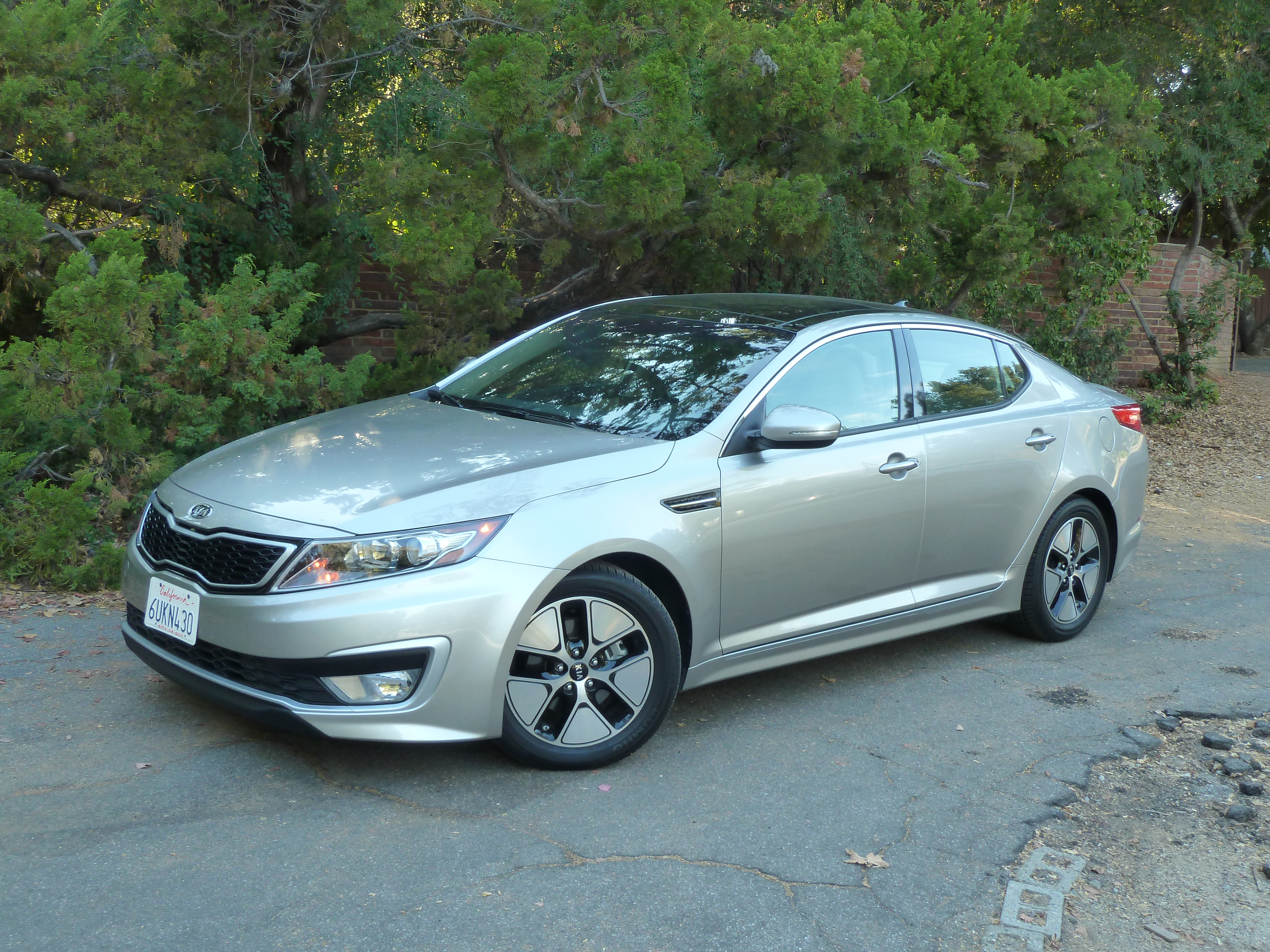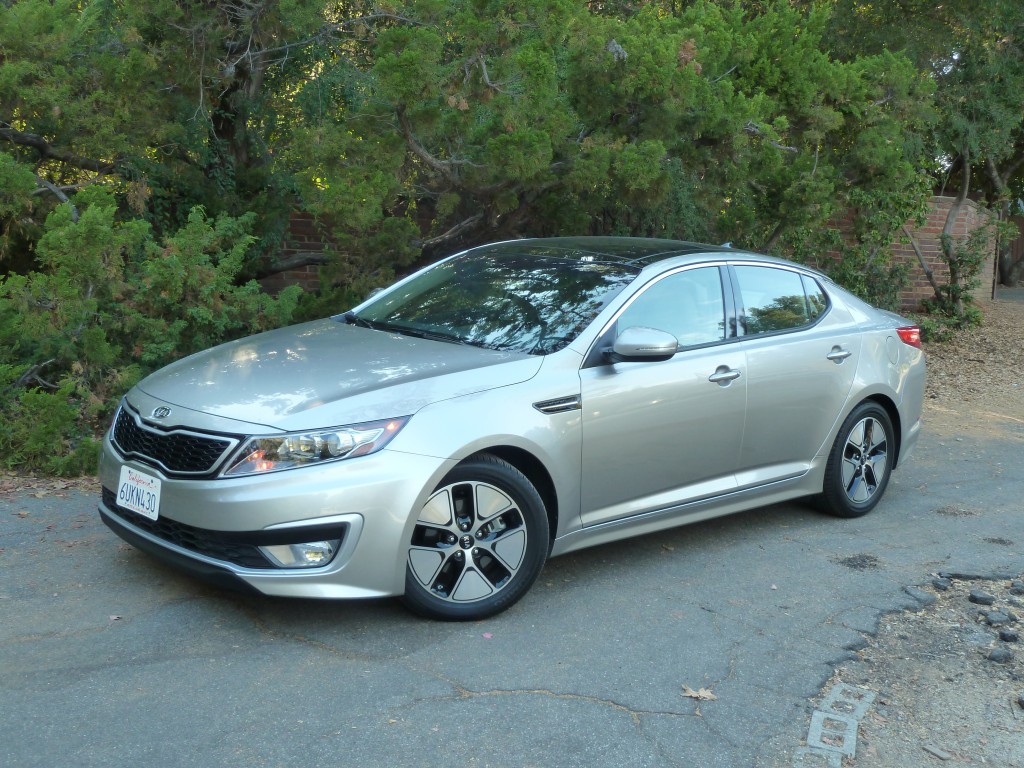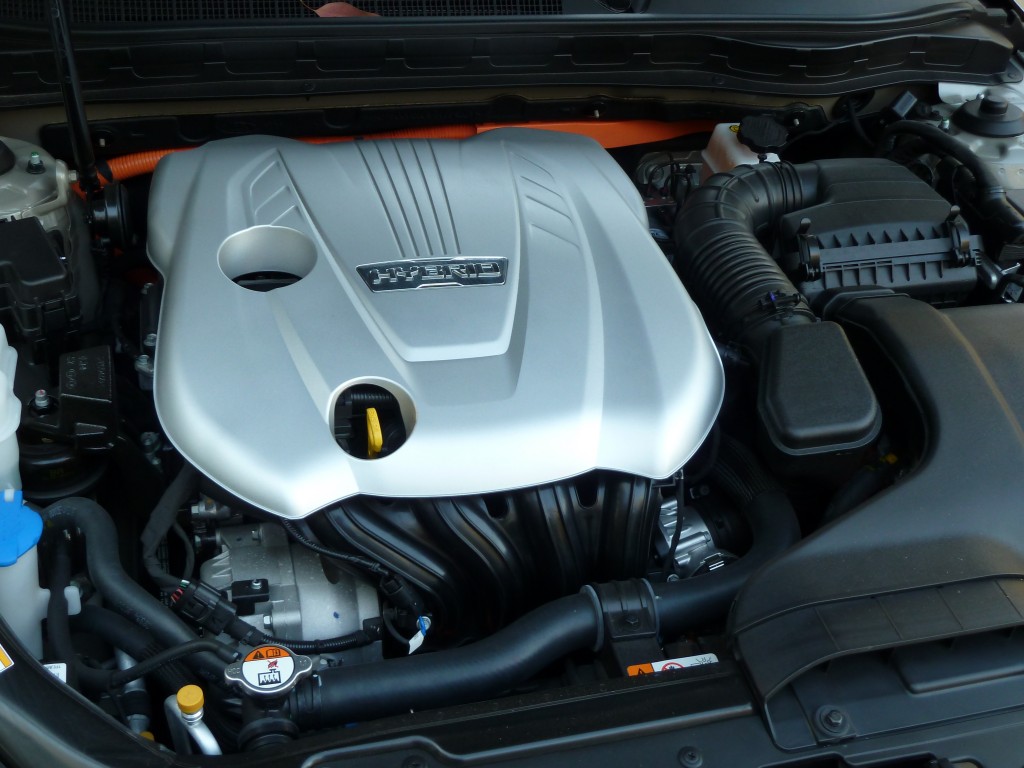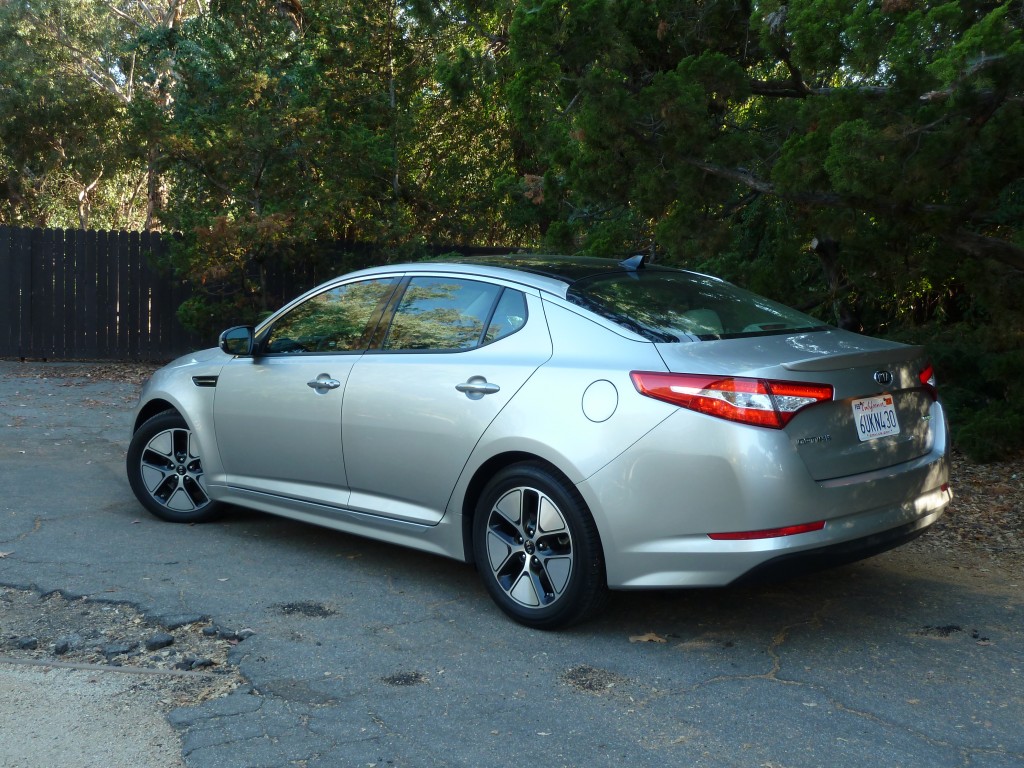I believe the KIA Optima and its corporate cousin, Hyundai’s current Sonata, to be among the most attractive currently available mid-sized sedans. They are handsomely designed, smartly sized, well built, nicely equipped, fine driving cars that offer good value. I’d not previously sampled Korean hybrid technology, and was interested to see how it compared to the gold standards like the Toyota Camry Hybrid and one of my favorites, the Ford Fusion Hybrid.
Like the Ford and Toyota, the Optima is powered by a smallish, conventional four-cylinder gasoline engine fortified by an electric motor for more punch off the line, better fuel economy, and to shutoff and restart the gas engine at stoplights. It also has an EV mode that will run the car along on pure electric power — gas engine switched off; not very far or fast, but it’ll put around parking lots or trundle through freeway stop-n-slog traffic just like a pure electric car, with no plug-in recharging needed, and no range anxiety.
So KIA kindly loaned me this fully loaded 2012 Optima Hybrid and I drove it long and hard for a week. One major technological difference between this one and the Ford and Toyota is that KIA (and Hyundai) use a 6-speed automatic transmission in their hybrid powertrain systems instead of the more common continuously variable transmission (CVT). Why should you care? The 6-speed has normal gear ratios and shifts like a “normal” car, with less of the rubberbanding, engine revving, and “motorboating” you get with the CVTs.
The 35/40 EPA ratings don’t sound as fantastic as mileage claimed by some of the others in this market segment, but high 30s to 40 in this size of car containing every luxury option you’d want, isn’t bad, and the best part is that the car actually delivered on its mileage claims. I measured several “average” tanks that yielded over 35 mpg with the electric AC running the whole time and no special efforts to “hypermile” the car into better numbers.
And what an interior this car has. You may have previously thought of Korean offerings as cheaply made cars, but not so this. The cabin is handsomely designed, beautifully finished in high quality materials, proved absolutely comfy, and also squeak and rattle free. No cheap or cheeseball here. At all.
My tester based at around $26,500 including destination, and topped out fully (and I mean fully) loaded at exactly $32,500. The difference between base and bottom line was about $5000 worth of luxury, technology and entertainment options, and while you might be able to cherry pick the option packages a bit and save a few bucks, I felt this car worth every penny of its price. I’d proudly own it and spend my money for it.
This car is easy to drive, and fun. You can select the transmission’s manual mode and shift it yourself if you want to, but even in standard Drive it accelerated plenty well, and still served up the good mileage. The hybrid system is pretty seamless as was the engine’s auto start/stop feature. It also wears some pretty beefy rolling stock which gave it crisp turn in and responsive steering while maintaining a relatively smooth, quiet ride.
Not sure what I’d change on this car, and I liked it a lot. There’s no such thing as the perfect car, but I struggle to find meaningful fault with it. If you are in the market for a fuel efficient, mid-sized luxury sedan, I offer that you strongly consider a KIA Optima hybrid.






